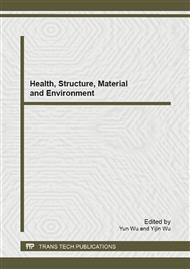p.270
p.277
p.282
p.286
p.291
p.297
p.303
p.308
p.312
Drying Characteristics of Graininess Agar under Infrared Ray and its Kinetics Model
Abstract:
In order to look for a low-energy–consumption and high-efficiency drying method, the drying characteristics of agar under infrared ray were studied. The results show that temperature has more obvious influence than granularity on the drying rate of agar. With the increase of temperature, the drying rate increases. The agar granularity does not have a significant influence on the drying rate. Comparisons of different drying models at different temperatures were made through linear regression analysis program. The results show that the drying procedure of agar under infrared ray can accurately be described by the Page model, and the drying rates and moisture contents at different drying stages can also be easily estimated with it.
Info:
Periodical:
Pages:
291-296
Citation:
Online since:
February 2013
Authors:
Keywords:
Price:
Сopyright:
© 2013 Trans Tech Publications Ltd. All Rights Reserved
Share:
Citation:


